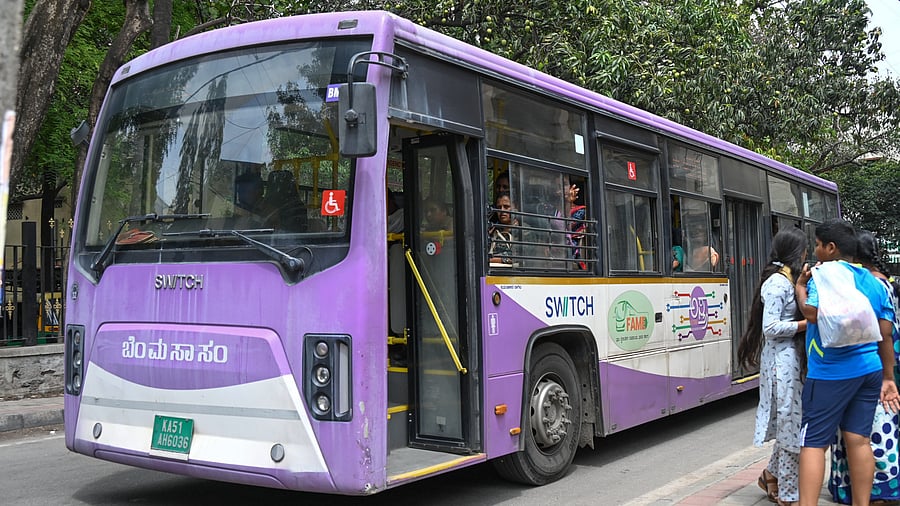
BMTC FAME-II electric buses operation back to normal and running on road after M/s TML Smart City Mobility Solutions Limited officials discussing with drivers in Bengaluru
Credit: DH Photo
Bengaluru: India's penetration rate when it comes to e-buses was 4 per cent in the financial year 2023-24 (FY24), and is expected to rise to 9 per cent by FY26 and further jump to 15 per cent by FY27, said CareEdge on Wednesday. In the current fiscal (FY25), it will move to 5 per cent.
In volume terms, the number of e-buses on the road in FY24 was 3,644 while in FY25, it is expected to touch 5,030. By FY26, it will progress to 10,060, and reach 17,100 by FY27.
Alongside the growth however, the debt size of the e-bus industry is also expected to inch up.
While the sector has huge potential, as per the agency, key challenges such as a lack of government incentives to private players who have a pivotal role to play, a dearth of charging infrastructure including fast-charging stations, and counterparty risks such as late payments and low ticketing revenue remain.
Government push is key, as the sector is seeing greater maturity in tech and local manufacturing. Potential cost savings is also considered a significant growth driver, especially when it comes to intracity travels.
Given its humungous population India’s overall bus density is 15 buses per 10,000 population, inevitably lower than other countries (such as the US at 25 and China at 18) or the world average of 24. As for e-bus density, India’s ratio is just 6 per million population. China, on the other hand, is a dominant force at 453 per million, and the world’s average is 85.
Among the states, Karnataka has the highest bus density with 40 per 10,000 population, followed by Delhi at 33. When it comes to e-buses, Karnataka ranks second at 28 per million, following Delhi (126).
According to Hemanth Kundavaram, CFO, PMI Electro Mobility Solutions Pvt Ltd, tenders are being issued in a large quantity across the country, so e-bus penetration is not just limited to a few states. However, Northeast India is not seeing much penetration.
Panelists pointed out that beyond incentives, there is a greater push needed for the sector such as awarding it infrastructure status. Speakers also highlighted that strong implementation is yet to be seen, with technology challenges on-ground besides other issues.
Furthermore, risks must be accounted for by multiple stakeholders and not just on operators or the people running the show, said Vivek Gupta, CFO, JBM Auto Ltd. Infrastructure, power, and other requirements must be matched.